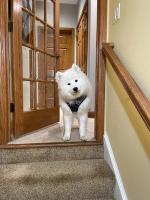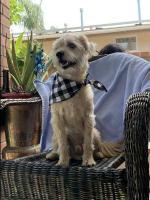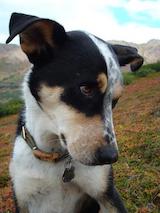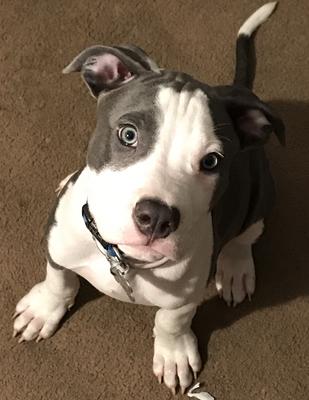What Is Dog Aggression

Dog Aggression itself is usually defined by canine behaviorists as "the intent to do harm". Many dogs show "displays of aggression" such as barking, growling, or snapping in the air, which are considered distance-increasing actions, those that intend to get the person or dog to move away from the dog. Some dog-aggressive dogs display aggression that is mainly defensive, and they harm another dog only if they perceive that they have no option. Yet, other dogs may develop dog-aggressive behaviour due to medical reasons, such as hormonal imbalances.
Aggression is a common dog behavior, and can be seen in all breeds of dogs, although some dog breeds have a predisposition to display such aggression. The breed standard usually spells out whether dog aggression is common in the breed and to what degree it is allowed. Most of the terrier breeds and the bull breeds are believed to have a higher likelihood of developing dog-aggression upon reaching maturity. Individual dogs may or may not display the level of aggression that their breed standard suggests. It is the owner's responsibility to ensure that these types of dogs are properly socialized and given a proper amount of exercise.
As well as breeding, a dog's experiences may affect his chance of developing dog aggression. A dog that is attacked as a puppy may develop fear-based aggression towards all dogs, or perhaps only towards dogs that resemble the dog that attacked him. Although people tend to bring these reactions out of dogs more often than dogs themselves, dogs only pay attention to what their owners allow.
Dogs that display dog-aggressive behaviour do not necessarily show aggressive behaviour towards humans. The two types of aggression are not necessarily related, and do not always occur in the same animal.
Factors contributing to aggression
Factors contributing to dog aggression
Factors contributing to the likelihood of the development of aggression include:
- Anxiety, fear or phobia
- Lack of structure
- Lack of proper exposure to other dogs during the critical socialization period
- Early imprinting by an aggressive or nervous dam
- A traumatic experience
- Territorial behavior
- Thyroid malfunction or other medical conditions
- Abuse from owners
- Medical or physical ailments
- Breeding and genetic predisposition
Aggression manifests at the age of adolescence to social maturity (6 months to 4 years). Warning signs such as fear and/or nervousness around other dogs, displays of aggression only under certain circumstances (while on leash, in the presence of food, in the presence of the owner, etc.), or most commonly, over-the-top play behavior can be seen at any stage of the dog's development. Play behavior such as tackling, chasing, mouthing, nipping, pawing, and wrestling are all normal canine behaviors that serve the evolutionary function of preparing the young dog for later combat and hunting. Young dogs that engage in excessive amounts of these behaviors are much more likely to develop aggression as they age.
Dog on dog aggression should not be confused with dog-human aggression (in the past, this was referred to as "dominance" aggression when directed at the owner, but is now simply called owner-directed aggression).
Many people commonly mistake fear and anxiety-related aggression as "dominance aggression," which is inaccurate. Dominance is rarely the cause of aggressive behaviors in dogs, with fear and anxiety being the greatest cause of both dog- and human-directed aggression.
Lack of exercise is not a cause of aggressive behavior, although exercise boosts serotonin levels, which offsets stress hormones such as cortisol, and can complement a behavior modification program. However, it is a common misbelief that aggressive dogs are "not exercised enough." Many aggressive dogs are exercised regularly.
Do You Have An Aggressive Dog?
Share your "My Aggressive Dog" story or post a question!
What Other Visitors Have Said
Click below to see contributions from other visitors to this page...
new born brought home female becoming agressive 




great female have had since she was a year old ... fastforward 8 years .. new born brought into home .. female now positions herself between us and baby …






